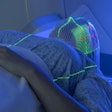Radiofrequency ablation (RFA) may be a feasible option in lieu of radiation therapy for treating breast cancer patients following a lumpectomy, according to researchers reporting early outcomes from a phase II trial conducted at the Rockefeller Cancer Institute of the University of Arkansas for Medical Science in Little Rock.
Excision with RFA may represent a new paradigm in achieving optimal breast conservation without radiation therapy, Dr. V. Suzanne Klimberg, principal investigator and chair of the breast cancer program, told attendees at the Society of Surgical Oncology (SSO) annual cancer symposium, held earlier this year in Phoenix.
The trial was based on the premise that surgeons may not remove enough tissue when performing a lumpectomy. Modern-day pathology only estimates the surgical margin, and because only five slices are generally made during breast surgery, pathology assesses only 1/1000th of the margin, according to Klimberg.
The researchers hypothesized that excision followed by RF ablation might provide therapeutic benefit comparable to conventional postsurgery treatment.
The researchers initially did a simulated lumpectomy on breast tissue from a mastectomy, followed by in vivo trials in Italy. With 3D reconstruction, they determined that by using radiofrequency ablation for 15 minutes at 100° C, they could treat at least 1 cm around the cavity.
Ninety-four women were recruited, of whom 62 had been diagnosed with invasive breast cancer and 32 with ductal carcinoma in situ. Six patients had nodal involvement. After the tumor was excised, RFA was performed. The surgeons used color Doppler ultrasound to assess the ablation zone after a patient sustained burns.
The average tumor size was 1 cm, but ranged from 0.2 to 4.8 cm. Forty-eight tumors were classified as grade I, 26 as grade II, and 19 as grade III, with one unknown.
Twenty-four patients had close margins defined as less than 2 mm. Eight patients had grossly positive margins, underwent resections, and were excluded from the final analysis. The majority of the patients were prescribed hormone blockers. Seven patients received additional chemotherapy treatment.
Cosmesis was scored in 62 patients two weeks after surgery using Radiation Therapy Oncology Group (RTOG) cosmesis scoring. Forty-five percent had excellent cosmesis, 40% had good cosmesis, and 15% had fair cosmesis.
At a mean follow-up of 23 months (range, six to 67 months), one patient developed contralateral cancer and three patients developed ipsilateral cancer more than 5 cm from the lumpectomy cavity.
Related Reading
MRI accurately detects residual breast tumors after radiofrequency ablation, December 2, 2008
Copyright © 2009 AuntMinnie.com



















